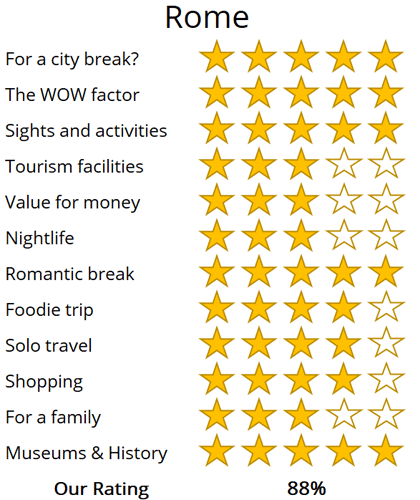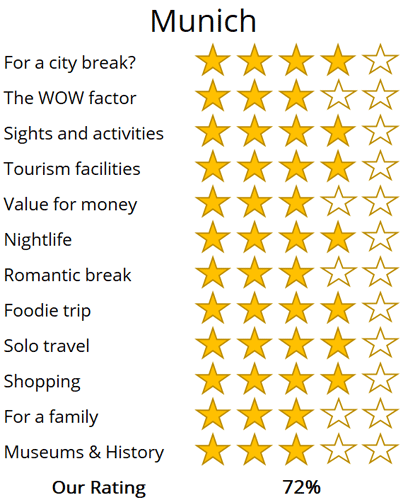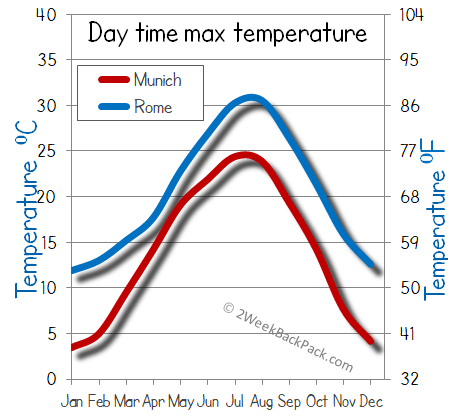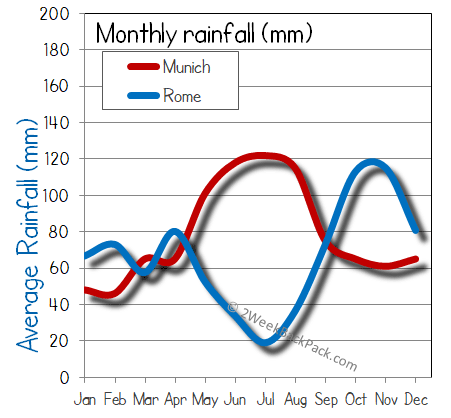WhereToGoForMyHoliday.com
The best destination comparison site!
WhereToGoForMyHoliday.com
The best destination comparison site!
Munich or Rome, which is better for your holiday in 2024?
Munich and Rome both offer unique and enticing experiences, but which one should you choose for your city break or holiday?
We recognise the difficulty in making this decision. While there is abundant information available on both destinations, clear guidance on which city better aligns with your travel preferences is often hard to find.
This article aims to provide an impartial comparison of Rome and Munich, and hopefully help you to choose the best city to visit.
The article is structured into several sections, each of which can be directly accessed through the following links:
• Introduction to the cities
• Scores and ratings
• Which one should I, friends, or family visit?
• When to visit and weather
• Who is the city suited for?
• The perfect 48hours (with map)
• Tourism details (where to stay? airport details?)
Introduction to Rome and Munich
No city can rival Rome’s historic and religious importance. The city is a living museum, with iconic landmarks and monuments, all intern-connected by grand avenues and charming side streets.
It maybe historical, but is far from a stagnant relic, Rome is a vivacious and chaotic city, led by emotions and the heart. Delicious food, late nights and socialising are the priorities for Rome, and keep the eternal city as one of Europe’s most popular cities.
There are flaws to Rome, often the result of political mismanagement, but gloss over these you will adore your time in Rome.
Beer-mad and shrouded by the mountains, Munich is the boisterous capital of Bavaria. It's in the deep southern reaches of the country, where lederhosen are the threads of choice and white sausage is served at breakfast. Proudly unique, romantic, and steeped in art and culture, you won't find anywhere else like this in Germany.
Of course, it's the legendary Oktoberfest that puts Munich on the map. One of the world's biggest festivals, it draws millions to the city in late September (yes, Oktoberfest is confusingly held in September) to glug huge beers and eat endless wurst. Trips at any other time of the year are sure to be a little more refined. They can involve long walks under Baroque churches, picnics in the English Garden park, and even daytrips to the stunning Bavarian Alps.
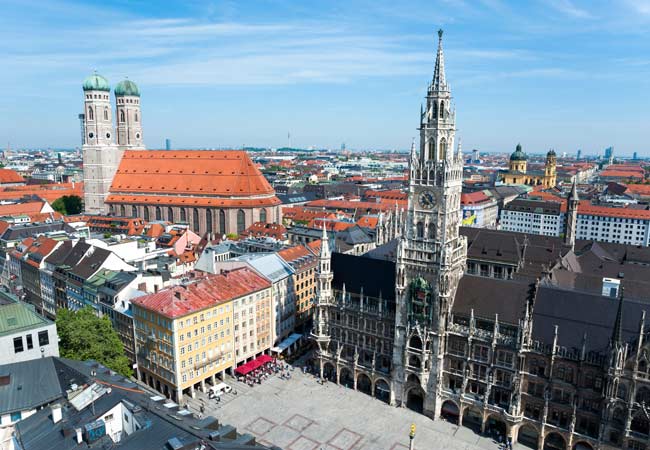
The Marienplatz and the historic centre of Munich, with the Frauenkirche Cathedral, and Neues Rathaus
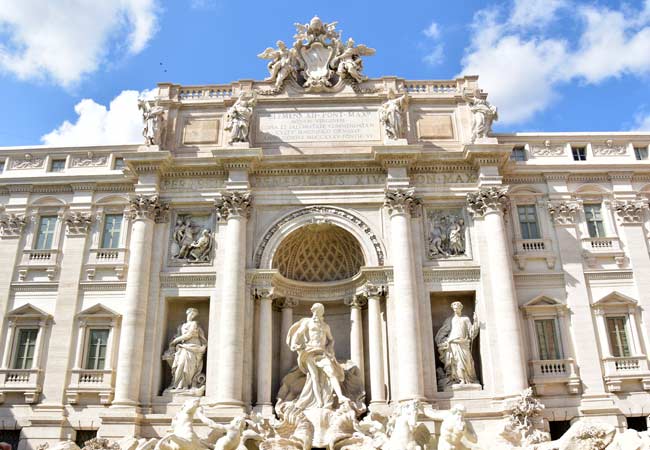
The Trevi Fountain, Rome
High-level summary for Munich and Rome
Summary
Where would I journey for a personal escape?
Rome
Where would I send my parents for a memorable visit?
Rome
Where's the ideal destination for my adventurous 19-year-old cousin?
Rome
Where should my food-obsessed friend indulge their culinary passions?
Rome
Note: The above comparisons are weather-independent and are based on travel during the most opportune times of the year. Details about the ideal travel seasons are elaborated upon later in this article.
In the sections that follow, you'll find a comprehensive comparison between these two fascinating cities. This includes recommendations on the duration of stay, the best times to visit, and tailored 48-hour itineraries for each city.
The final segment delves into practicalities for your travels, such as the best airport to fly into, the optimal districts for your accommodation, and insider tips, for when you come to explore the city.
We hope that you find all of this information useful, in planning your next exciting trip!
Destination details
How long to spend each city?
Considering the sheer number of outstanding tourist attractions, Rome can be seen within two days. Three days allows for a more enjoyable visit to Rome, with time to absorb the culture. There can be long queues for the Sistine Chapel and the Colosseum, so starting early in the day is essential for a two-day visit.
There are good day trips from Rome including the Roman ruins of Ostia Antica or the historic town Tivoli. Rome has excellent intercity trains, and it is possible to visit Florence or Naples, or even Pompeii (2 hours by train) as day trips.
Take a couple of days minimum to get a feel for the alternative vibes of Munich. You'll need at least a morning or two to check off the grand churches and plazas of the downtown. Afternoons are often lost to a haze of currywurst and spätzle. The evenings will disappear to clinking tankards and too much Bavarian beer.
If you're planning on joining the Oktoberfest party, then the normal amount of time to spend in the Munich event is two days. Some people will stick around longer but remember that accommodation can cost a bomb during festival dates and you'll need to book well in advance.
The closeness of the Alps and the wide variety of off-the-beaten-path neighborhoods in Munich mean that it's also possible to stay here for much longer than just a weekend or a couple of days. You could do weeks of hiking in the spring and summer months. Alternatively, you could do a full ski holiday in nearby Garmisch-Partenkirchen (Germany's biggest resort) during the winter.

Excessive amounts of beer, lederhosen, singing and crazy fairground rides… it can only be Oktoberfest
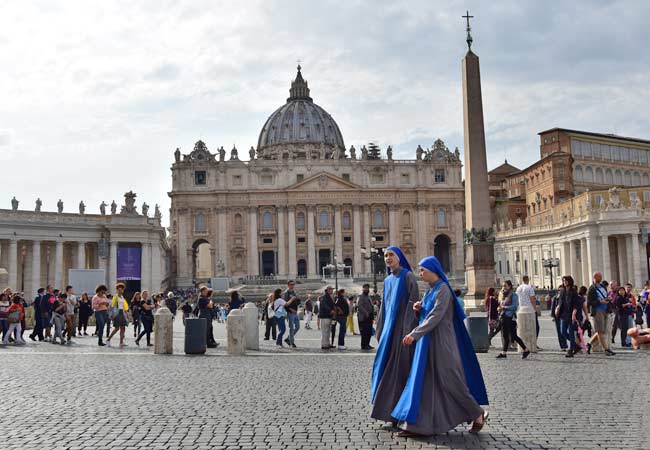
The Vatican is a city state within Rome
Most visitors head to Rome in the hot, humid and crowded summer months of July and August. Early spring or autumn are a much better time of year, and provides a much more agreeable climate, without the throngs of tourists.
To truly avoid the crowds, consider November to March, but there is always the slight chance of rain and it can be chilly. Even if it does rain, head indoors for a long lunch.
Munich is one of those cities that has something going for it no matter the time of the year. Lots of people like the height of the summer, for the regular sun and temperatures that often spike above 30 degrees in the middle of the day. That's certainly perfect for wandering the town and enjoying the big lawns and paths of English Garden.
The autumn is best known for Oktoberfest. The shindig and the beer drinking begin in mid-September, lasting until the first couple of days in October. It's usually still warm for the party, but the days get shorter and jumpers will be needed as you get closer to November.
There's often snow in Munich from December onwards. This is the time of year to come if you have your sights set on the ski fields of the German Alps. The slopes of Garmisch-Partenkirchen typically open for business before Christmas, which is also when the enchanting markets start selling gingerbread and sausages on Munich's medieval squares.
Spring is also lovely. May is among the best months of all to travel. The summer crowds haven't arrived yet, the snows have melted, and thermometers can read a pleasant 20 degrees during the day.
Munich is unique in that it manages to fuse together the great outdoors, rich European culture, and an enticing foodie scene. That's all thanks to its place as the historic capital of Bavaria, which brings a long tradition of cooking, beer making, castle building – the list goes on.
The upshot? There are all sorts of travellers who are catered to, no matter if you come in search of pretzel eating or high-altitude trekking.
One thing you won't find in this city is the sea. The nearest saltwater is a hefty drive over the Alps in Italy or Croatia. So, don't come if you're pining to top up the tan and swim in the Med.
Rome’s appeal is ageless and timeless. It is no matter if you are going there for the perfect Instagram post of the Colosseum or on a religious pilgrim to the Vatican, the city will not disappoint.
Sadly, the years of austerity and political mismanagement are starting to wear through Rome, with an unkept and unloved mentality decaying around the edges of the city.
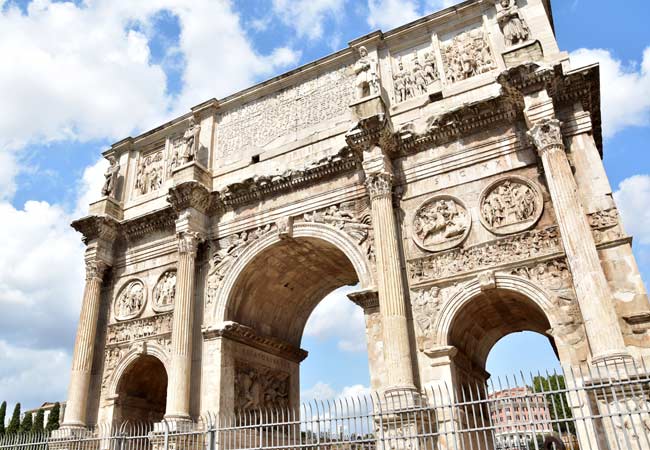
The Arco di Costantino, Rome

The Englischer Garten (English Garden) is the spawning park in the centre of the Munich
Rome in 48 hours
Below is an interactive map for 48 hours in Rome; day 1 is highlighted in green and day 2 in yellow, with optional sights in grey.
Begin at the icon of Rome, the Colosseum, but also explore the Foro Romano with its many excellent Roman ruins. On the way to the historic centre of Rome passes the Vittorio Emanuele II Monument, with its amazing viewpoint.
For the afternoon explore the charismatic centre of Rome, taking in the Piazza Navona, the Fontana di Trevi and Piazza Colonna and the Pantheon.
For the evening head to the Trastevere district on the western banks of the Tiber, for bars, late food and lively experience.
Start early on the second day to avoid the queues for the Sistine Chapel and Saint Paul’s Basilica. From the Vatican City, follow the River Tiber past the Castel Sant'Angelo, Mausoleo di Augusto to the Piazza del Popolo.
For the afternoon explore the Villa Borghese park, before heading down the Via del Babuino, past the Spanish steps and into the Trevi district for a delicious meal. Before finishing in Rome part take in the tradition of passeggiata, an evening stroll wearing your finest clothes.
48hours in Munich
Sample Munich's famous food, beer, and regal inner city on this two-day itinerary that's packed with amazing palaces and parks. If you're hanging around for longer, then you should also have time to make a beeline for the Alps or explore those off-the-beaten-track neighborhoods, but that will have to wait…
Day 1: Your travels begin on the grand Odeonsplatz. A prime example of the city's 19th-century rebuilding, it hosts some of the most magnificent sights in the region. There's the huge, 130-room Munich Residenz, the onetime home of the Bavarian kings and queens. There's the Theatine Church from the 1600s, sporting its dual Baroque towers.
You only have 48 hours, but the palaces can be visited if you have extra time. Instead, move on through the heart of the city on Briennerstraße to the vast plaza of Königsplatz. This is a photo op extraordinaire, with handsome Neo-Classical monuments like the strange Propyläen. The area around that is the artistic quarter (the Kunstareal), where there are endless museums and galleries to go into if you need to warm up or escape the rain.
Next is the beautiful Frauenkirche. This is a symbol of Munich as a whole; a great church topped by bulbous domes on the central Frauenplatz. It will take around 20 minutes to walk over there, but you'll enjoy moving into the Altstadt area as you go. You should plan to spend the evening within, hopping between sights like the iconic Hofbräuhaus (the best known beer hall in the city) and the ancient Peterskirche (the oldest church in Munich).

The Schloss Nymphenburg and its beautiful grounds
Day 2: No visit to the grand royal capital of Bavaria could possibly be complete without at least a glimpse of the Schloss Nymphenburg. It's hardly central, but private tours can whisk you there and back in a single morning, going through the manicured gardens, the court rooms, and the curious Marstallmuseum with its gold-leafed carriages from the 19th century.
When you return back to the middle of Munich head straight for the English Garden. This is one of Germany's favourite parks. You could start by strolling up the Eisbach to see the surfers riding the river wave. Then explore the pretty Hofgarten, where babbling fountains and bandstands once provided a retreat for Bavarian royals. Alternatively, go straight to the Chinese Tower Beer Garden, to glug traditional German hops brews and taste bratwurst and pretzels until sundown.

The Olympiapark complex, constructed fro the 1972 Olympics
Munich International Airport is the second busiest hub in all of Germany. It's a major arrival point, with links coming in on premium and low-cost fliers from right around the globe. Getting to the city from the terminals is easy thanks to the direct S-Bahn line that runs straight to the train station. The trip costs just over €11 and takes around 40 minutes in total.
Long-distance overnight trains and local German trains alike will arrive at Munich Central Station. It's right in the heart of the city, within walking distance of the Altstadt and the Odeonsplatz. If you'd prefer not to walk to the door of your hotel, however, you can enter the S-Bahn or U-Bahn networks from there. Those, along with the comprehensive bus routes and tram lines, can get you virtually anywhere in the town. Basic one-way single tickets cost €2.80 per ride. Buy them at the blue vending machines located in the stations.
Munich is a safe, modern city. The locals are famed for their friendliness and welcoming attitude – a trait of Bavaria, they say. However, it's still important to be wary of scams and dangers, particularly during the Oktoberfest, when alcohol intake increases dramatically.
The best areas to stay in Munich are the Altstadt, the streets around English Garden, and the grand university and gallery area of Maxvorstadt. Cheaper hotels that are still within walking distance of the sights can be found south of the main train station around Bayerstraße.

The Odeonsplatz plaza and the distinctive yellow Theatine Church
Rome has to be visited at least once in your life and a city break is the ideal opportunity. Rome is served by two airports; Leonardo da Vinci (regular airlines) and Ciampino (low-cost airline), and there are regular train services from both to central Rome. There is plenty of flight capacity and reasonable prices can be found year-round.
Roman has numerous hotels, and accommodation options, but the common complaint is the relaxed approach to maintenance and upkeep. Rome is a destination to check all hotel/room reviews before booking.
For your first visit, you would want to be based in the tourist square, with Villa Borghese park in the north, Termini train station to the east, the Colosseum to the south and Vatican City to the west. Rome is an enjoyable and easy city to explore, and all of the main attractions are in this tourist square.
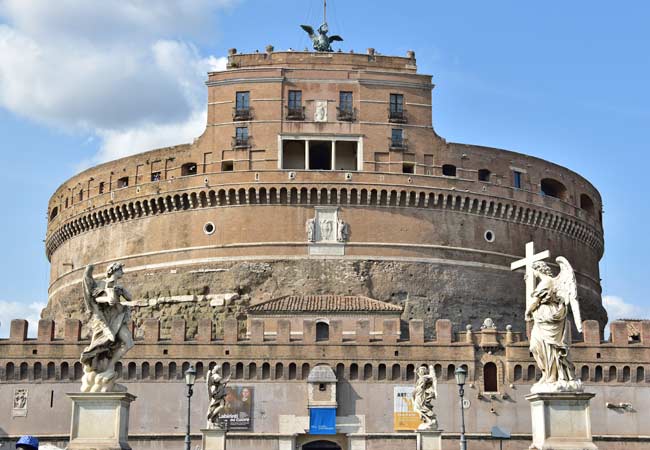
Castel Sant'Angelo, Rome
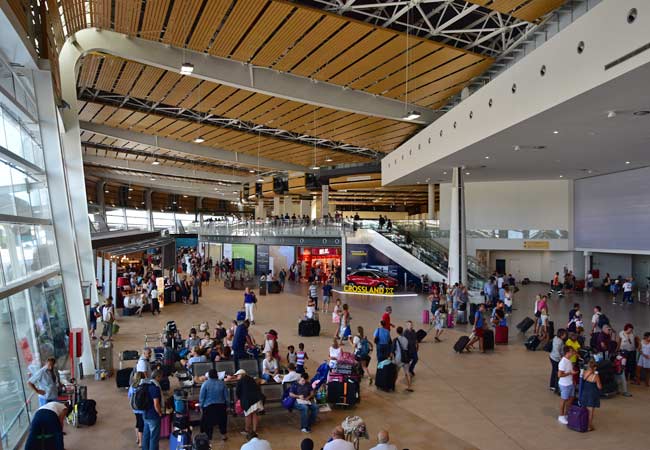
oh we were stuck in the airport!

Copenhagen was a bit expensive...

All we did was drink beer in Brussels...

Muncih was crazy

And we got so burnt!
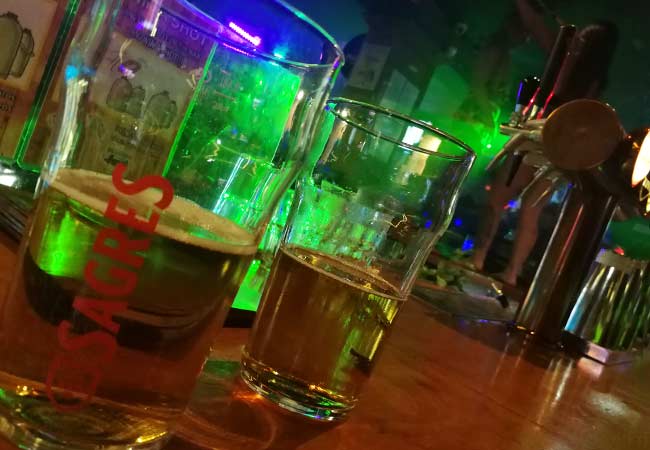
Remeber that night in Rome

oh we were stuck in the airport
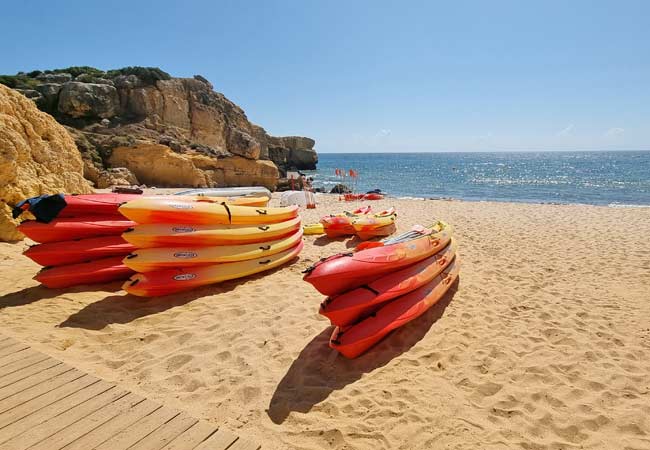
So much fun kayaking

Berlin and that group from Austria!

There was such a view from that church

And we got so burnt!

Munich was eventful, wasn't it!

Such a view from that cathedral in Florence
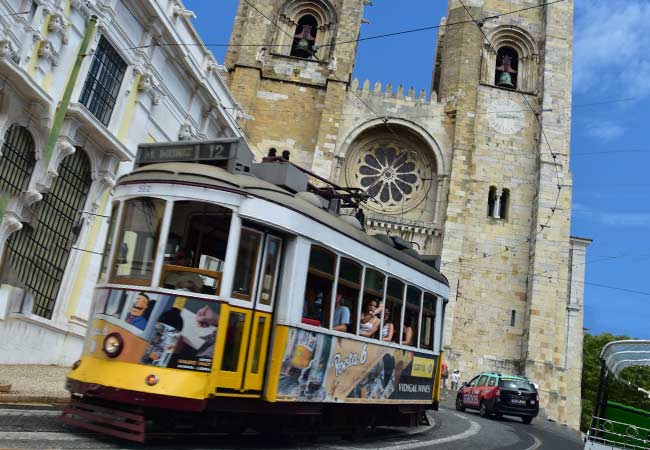
Lisbon was such so much fun

Last summer was so much fun .... x

Remeber that night in Rome

Lisbon was such so much fun

Such a view from that cathedral in Florence

Munich was eventful, wasn't it!

And we got so burnt!

Remeber that night in Rome

All we did was drink beer in Brussels...

Berlin and that group from Austria!

Can't wait to go back to Dubrovnik

Remember that boat ride in Prague

Copenhagen was a bit expensive...
